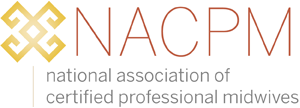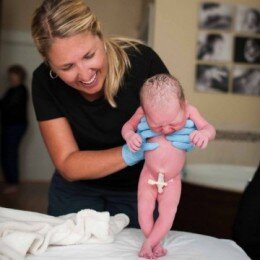“Of all the forms of inequality, injustice in health care is the most shocking and inhumane.”
Martin Luther King, Jr. (1966)
“I have a dream that one day … little black boys and black girls will be able to join hands with little white boys and white girls and walk together as sisters and brothers.”
Martin Luther King, Jr (1963)
“Fifty years ago, on the steps of the Lincoln Memorial, Dr. Martin Luther King Jr. told us about a dream…Fifty years later, all too many little black boys and black girls die even before they learn how to walk with their white sisters and brothers.”
Dr. Michael Lu (2017)
NACPM’s new webinar series on “Equity, Race, and Access to Midwifery” launched on January 5, 2017 with a powerful presentation on “Racial-Ethnic Disparities in Birth Outcomes” by Michael C. Lu, MD, MPH. Citing data from the National Center for Health Statistics, he described just how extreme the disparities are between black and white babies. The data never fails to shock when one hears that black babies are:
twice as likely to die within the first year of life
twice as likely to be born low birth weight
nearly three times as likely to be born very low birth weight
nearly twice as likely to be born premature
and three times as likely to be born very premature.
Although focusing on the health disparities between black and white babies, Dr. Lu also points out that there are great disparities across all racial and ethnic groups in infant mortality.
Examining the underlying causes of infant mortality, Dr. Lu discussed genetics, behaviors, prenatal care, socioeconomic status, and multiple risk factors. He then described another way of thinking about these not as disconnected issues but as an integrated continuum or life course perspective, “In perinatal health, we focus so much on events occurring in the 9 months of pregnancy we forget that there are a great deal of life course influences on perinatal outcomes, and a great deal of perinatal influences on life course outcomes. For example, in explaining the Black-White gap in infant mortality, for decades we searched for maternal risk factors during pregnancy rather than looking at the mothers’ cumulative life course experiences.”
He then went on to discuss his own research on maternal stress and fetal programming or epigenetics. It’s fascinating, and sobering, to learn that the same stress reactivity and immune-inflammatory dysregulation that lead to preterm birth will go on in the next 15-20 years to wreak havoc in the mother’s blood vessels, heart, and other vital organs. In other words, that preterm birth may be an early sign of things to come – it may herald the development of hypertension, heart disease, and other chronic diseases mediated by stress and inflammation.
In sum, he points to the deep, wide and long-term impact of racism in maternal-child health. The importance of disrupting racism is clear and compels us to examine the topic in more depth as our series continues. A recording of the first webinar is available on the NACPM website. “Social & Physiological Impacts of Racism in Maternal Child Health” continues on January 26, 2017, when we will go deeper into the study of epigenetics with Michelle Curtis, MD, MPH, MLL; recent research on racism and birth outcomes with Shandanette Molnar, JD, and Indra Lucero, ESQ; and the implications for health policy with Camille Sealy, MPH. Then on February 23, 2017, we turn our attention to the midwifery profession in “Diversity Matters: What Are Our Challenges.” Keisha Goode, PhD, will discuss her landmark study “Birthing, Blackness, and the Body: Black Midwives and Experiential Continuities of Institutional Racism” and Nancy Anderson, MD, MPH, will report on her research “Women of Color Entering Midwifery: An Assessment of Unmet Needs.”
Photo: Martin Luther King Jr. addresses marchers during his “I Have a Dream” speech on August 28,1963 – Associated Press file photo
READ MORE ABOUT OUR WEBINAR SERIES, OTHER UPCOMING WEBINARS AND NEWS HERE








